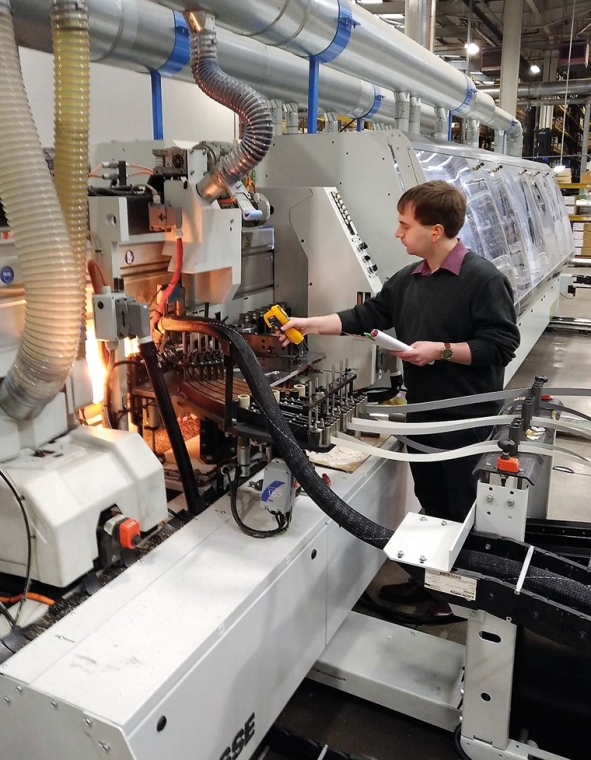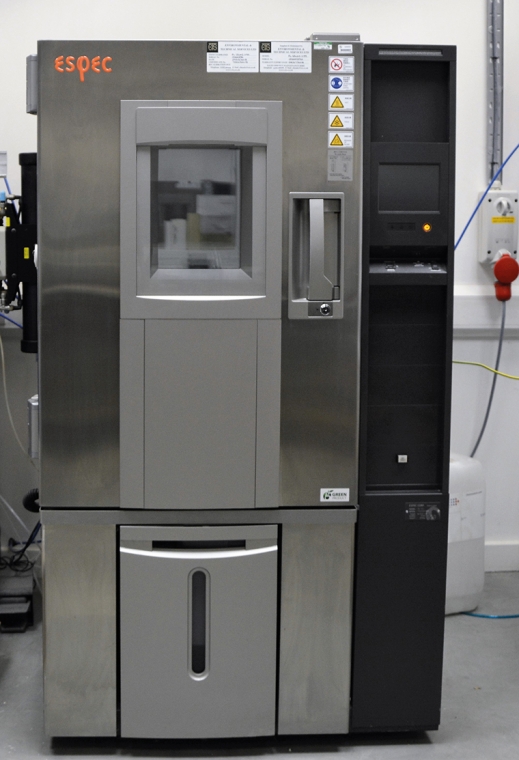UV Indicator – a technique used by Hybond’s technical team to study adhesive distribution
.
Adhesive specialist, Hybond, has entered its 25th year of business. A quarter of a century has seen this family firm grow from suppliers of technical adhesives, to modern day technical bonding specialists who supply not only adhesive products, but innovative bonding solutions and services to a variety of sectors.
Hybond’s focus is to provide full solutions to its customers’ bonding requirements, including consultation, application trials, and bespoke solutions to complex problems. Whilst a reliable source of technical adhesive products, the company also has the ability to test goods to industry standards in its fully-equipped laboratory, provide bespoke productions lines with Hybond machine systems, plus its customers benefit from provisions such as its free of charge Process Review Service.

Edge banding audit carried out by Hybond technical team member
Another popular service is the Hybond site audit. At the time of writing, members of the Hybond technical team were visiting a customer’s site to carry out a bonding line audit on their large-scale furniture production operation, which includes a significant edgebanding installation. The day’s audit involved various tests to ensure that everything happening within the customer’s edgebanding works was within the correct parameters.
Hybond’s technical director, Adrian Dalrymple, explains some of the checks carried out, such as applying reversed edging to a panel which can then be deconstructed with ease, allowing for careful examination of bond line characteristics. “Such examinations provide us with essential information, and can show if the adhesive coating weight is perhaps too high or low, maybe the guide plate setting is incorrect with the roller touching the panel or too far away; there are many factors that the experienced eyes of our technical team can identify and correct to optimise output,” he says.
Application of adhesive is critical; if applied at the wrong temperature, the customer is likely to encounter bond failures and quality issues. During their audit, the Hybond team checked the adhesive tank temperature using a non-contact infra-red thermometer. They checked the application roller too, as experience has taught that RTD sensors (Resistance Temperature Detector) can become faulty over time, and although systems may be reporting correct levels, the critical application temperature at the roller might not be optimum. For today’s customer, Hybond were happy to confirm ideal parameters were met, due to the success of a regular auditing schedule.

Espec Climate Chamber – one of the climatic testing chambers utilised within the Hybond lab
Back at the lab …
The team will complete their audit by returning to the Hybond Laboratory, with sample edged panels from the customer which will be put through a series of tests such as high temperature exposure in one of the laboratory’s climatic chambers. Technical manager, Dr. Karl Kaye, explains that “Following exposure to heightened temperature and other climatic variables during a typical climate chamber cycle, we would expect to see failure of the component parts prior to failure of a successful adhesive bond”.
Within the Hybond laboratory, a wide variety of tests are run to industry standards, such as those laid out by FIRA (Furniture Industry Research Association). Adhesion testing and treatments routinely carried out by its team include: climate, peel, and surface energy testing, plasma treatment, high intensity UV treatment, digital data logging, and digital microscope analysis.
For further information on Hybond’s products and services, call 01743 861800 or visit www.hybond.org.uk.








